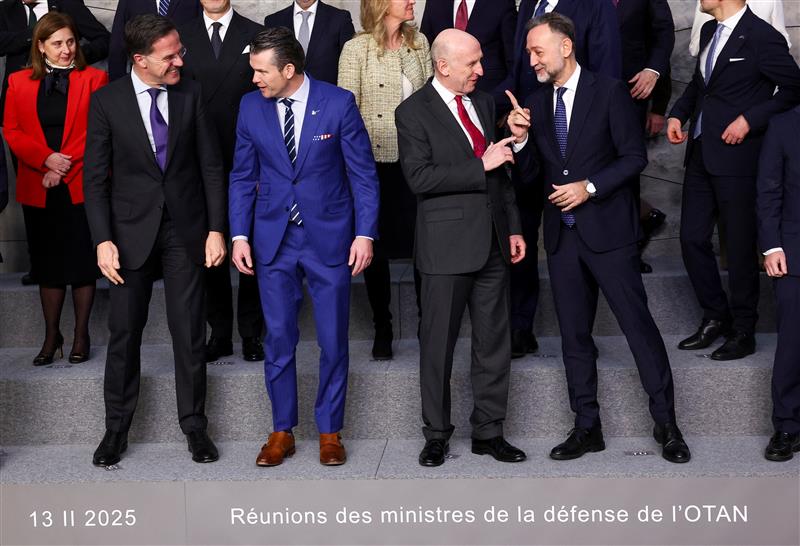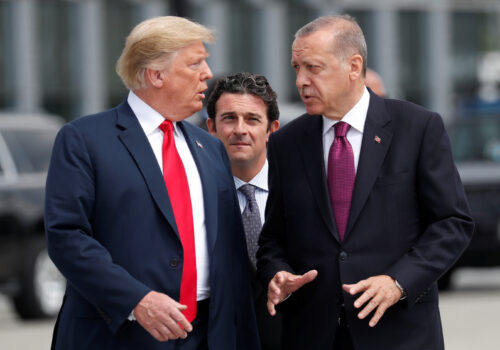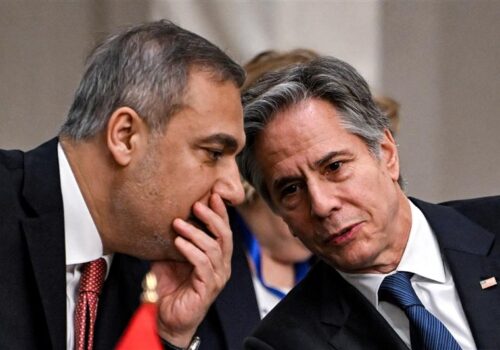With US President Donald Trump now back in the White House, there is new energy in discussions about the European security architecture—generated by the president’s comments about the war in Ukraine, NATO burden sharing, Greenland, and the growing importance of the Asia-Pacific.
Looking at the European security architecture—built for the most part by NATO, the EU Common Security and Defense Policy (CSDP), and the Organization for Security and Co-operation in Europe (OSCE)—there is much bolstering to be done. Türkiye,* as a country that is both a significant partner for the European Union and a major NATO ally, could help play a role.
Dents in the NATO armor
NATO has implemented several important measures to enhance European security, particularly following the Russian invasion of Crimea in 2014. For example, it has enhanced its forward presence in Poland and the Baltic states, added new members (Sweden and Finland), increased its focus on the Arctic, and modernized its strategies and defense plans. Additionally, many NATO allies have made progress on reaching and even surpassing the goal of spending 2 percent of their gross domestic product on defense.
NATO continues to adapt to the evolving European security situation. However, as shown by the war in Ukraine, NATO must do more to enhance its defense industrial base, modernize its command and force structure, and revise its NATO defense planning process.
Additionally, NATO depends heavily on the United States. If the United States pulls back on its support for Ukraine, European countries would need to increase their support in order to maintain the level of aid committed by NATO. However, in such a scenario, European allies may be reluctant to fill the gap, feeling that they need to increase their own defense capabilities in the face of the Russian threat. This would be the case even if Russia’s war in Ukraine ends, particularly for Baltic and Scandinavian allies who feel the threat from Russia more often than other NATO members. Such a dynamic could negatively affect Europe’s collective defense efforts.
NATO has placed much focus on the threat Russia poses to Eastern Europe. However, Russia is also slated to cause new problems in the Arctic. Melting ice is unlocking new transportation routes and raw materials, making the region another hot spot for great-power competition. And even in the absence of conflict, Russia and other actors could deploy hybrid warfare tactics in the region, similar to approaches taken in the Baltic Sea. While NATO has taken some measures—such as Operation Baltic Sentry, which uses naval vessels and surveillance systems to protect undersea infrastructure—NATO may take up additional efforts to scale up its response.
A glaring hole in the CSDP
The CSDP was designed by the European Union to carry out non-Article 5 missions (such as crisis management and conflict prevention) in the post-Cold War era. Considering the new security situation and new missions geared toward fortifying collective defense, non-EU countries play an important role in what the CSDP strives to achieve. As former NATO Secretary General Jens Stoltenberg has stated, security in Europe is “impossible to envisage,” without the work of non-EU NATO allies. Thus, it would be wise to establish an EU security mechanism that includes non-EU countries. It would also be cost effective to have a more integrated security and defense system with NATO.
The OSCE’s shrinking effectiveness
The OSCE, a security-oriented body with fifty-seven participating countries (including Russia), has played a part in several processes and agreements that have shaped European security, including the Helsinki Final Act, the Treaty on Conventional Armed Forces in Europe, the Vienna Document on Confidence and Security-Building Measures, and the Code of Conduct on Politico-Military Aspects of Security. It has also led a monitoring mission in Ukraine and the Forum for Security Co-operation, which hosts dialogue between OSCE participating countries on military conduct and security building.
However, these agreements and processes have proven ineffective, and some (such as the Minsk agreements) have outright failed, as demonstrated by Russia’s war in Ukraine.
The OSCE should consider new agreements and processes based on the lessons learned from these ineffective or failed examples—and it should ensure that such agreements and processes adequately take new threats and technologies into account. The OSCE, in revisiting its old measures and pursuing new efforts, will need to consider how European security may be impacted by, for example, artificial intelligence, pandemics, cyber warfare, aggression in space, climate change, and migration.
For example, one of the OSCE’s strengths is its ability to conduct field missions and observations in crisis regions. Going forward, such missions and observations must take into account the needs of the digital age. To do so, the OSCE will need the support of its member countries. Yet, technology also has great potential in helping these missions and observations.
Türkiye’s potential
Beyond this framework for European security, Türkiye has the potential to help strengthen the European security architecture.
The country has many advantages: its geopolitical position, defense industry, role in the energy system, renewable energy opportunities, access to strategic transportation routes, infrastructure, and young population.
Türkiye has gained significant experience in resolving crises. Such experience has come from Türkiye’s efforts regarding crises in Ukraine, the Middle East, the Balkans, and the Horn of Africa. Backed by this experience, Türkiye has the ability and potential to contribute to global peace and stability efforts. This capability can be another important contribution to the European security architecture.
Additionally, Türkiye’s defense capabilities could help shore up the European security architecture. The Turkish Armed Forces (TAF), which participates in efforts to address regional conflicts and continues to perform important tasks in the fight against terrorism, has significant combat experience and high operational readiness. As a NATO ally, Türkiye—via the TAF—continues to fortify NATO activities including air policing (over Bulgaria, Romania, and the Baltic states), maritime activities, missile defense, and peacekeeping operations. While most countries in the post-Cold War era focused on peacekeeping missions, the Turkish Armed Forces adeptly balanced between maintaining its regular warfare capabilities while contributing to counterterrorism and peacekeeping missions. This experience can be helpful not only to NATO but also to the CSDP (if widened to non-EU allies) as Russia poses a challenge for security in Europe.
In addition, the Turkish defense industry has managed to react quickly to TAF’s combat experiences. TAF has designed a defense planning system through which the force defines operational requirements and defense industry stakeholders define the technology needed. The TAF and defense industry work together to achieve Turkish defense and security goals. Such collaboration between the force and defense industry can help support European security needs.
Finally, seeing as warfare and defense will be shaped by emerging and disruptive technologies, Türkiye’s innovation, particularly in automated systems, can prove useful for Europe. The Turkish defense industry is currently developing unmanned aerial, naval, and ground vehicles. With such technologies, and the military concepts the TAF is developing for these new systems, the Turkish defense industry and TAF have together positioned the country to respond to the needs of the digital age. Europe could harness the advantages of this position.
There is now a new security situation in Europe. Thus, Europe will need to look outside of its current framework for security solutions that can realistically and effectively address today’s challenges amid increasing threats and the evolution of the digital age. Türkiye may be one source of much-needed solutions.
Yavuz Türkgenci is a recently retired three-star general in the Turkish Armed Forces whose career spanned several offices, including western European Union and NATO posts and as the commandant of the Turkish Third Field Army. He holds a doctorate in security strategy design and management.
*This article refers to “Türkiye,” the country name that the Turkish government and United Nations officially adopted in 2022.
Further reading
Fri, Dec 6, 2024
What the US-Turkey relationship will look like during Trump 2.0
TURKEYSource By Rich Outzen
The second Trump term presents new opportunities and risks for US-Turkey relations.
Fri, Jan 24, 2025
There’s a path forward for Turkey-Greece cooperation—but it requires a dose of realism
TURKEYSource By Harry Tzimitras
For a successful Turkey-Greece partnership, both sides need to actively seize the opportunities of cooperation.
Mon, Jan 6, 2025
Assad’s fall has created an opportunity for US-Turkey cooperation
TURKEYSource By Rich Outzen
Long a point of discord between Washington and Ankara, developments in Syria present an opportunity to return to cooperation.



